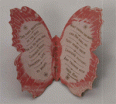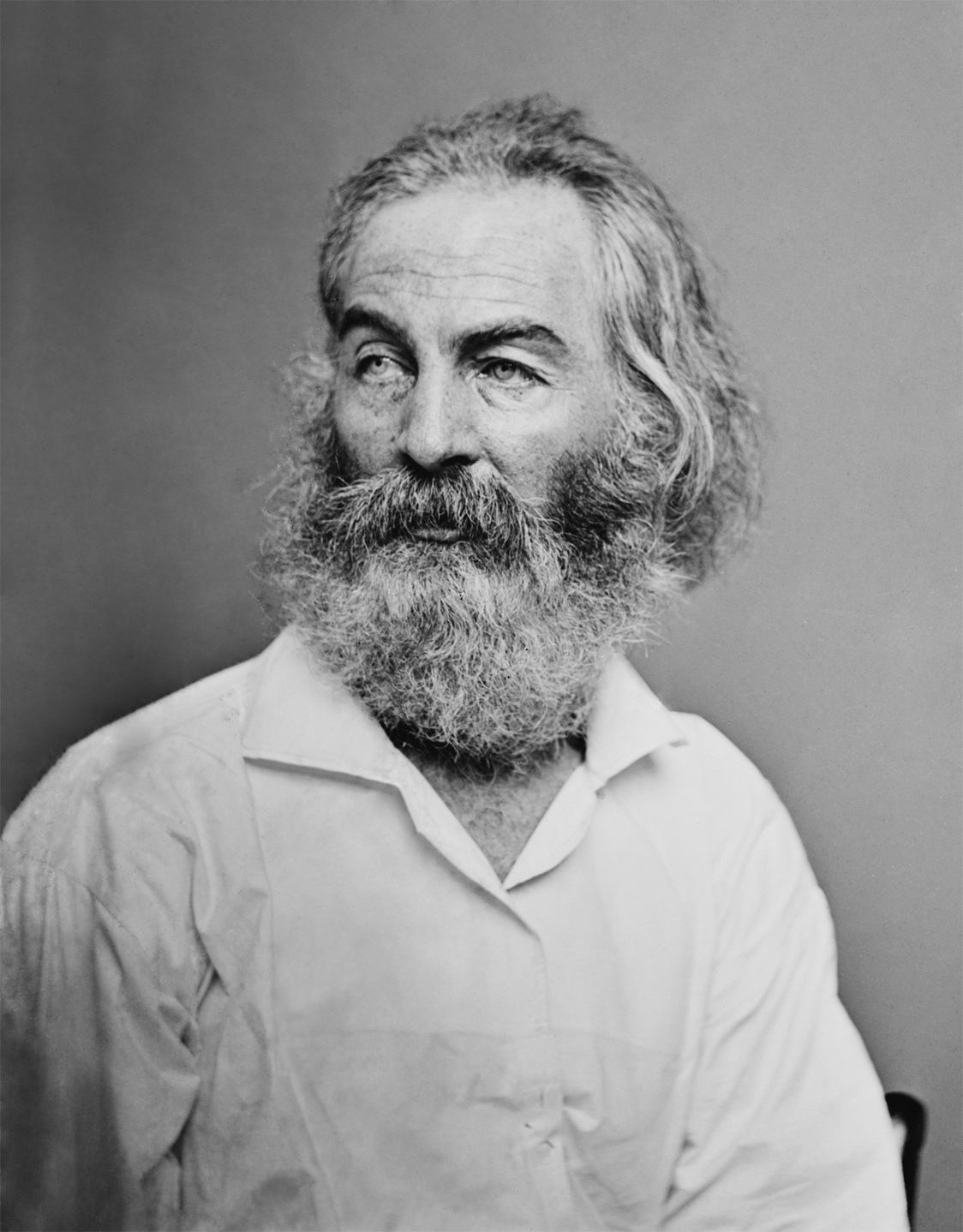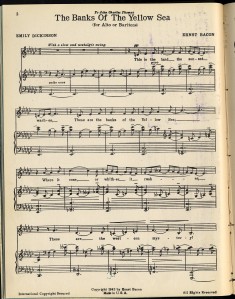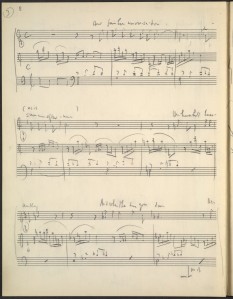The Library of Congress dedicates a short section of it’s American Literature collection to listing and explaining “books that changed America.” Review the link below for a quick and interesting overview of its choices.
https://www.loc.gov/exhibits/books-that-shaped-america/1850-to-1900.html
The Library of Congress also has a unique collection called, “The Language of the Land” that seeks to provide documents and maps from different eras in American history. This aligns well with any unit study of transcendentalism or American expansionism, but may not relate directly or fully to an English classroom’s approach to the material. The collection is very valuable and interesting and can be found through the link below.
https://www.loc.gov/exhibits/land/landintr.html
Walt Whitman

Considering this project began with a focus on immigration, I found it appropriate to loosely tie that original theme into this section on American authors through Whitman’s famous poem, “Crossing Brooklyn Ferry.” Below is the link to a recording read by the poet, Arthur Sze.
http://www.loc.gov/poetry/poetry-of-america/american-identity/arthursze-waltwhitman.html
Lesson Ideas:
Because the recording is quite long, students may be assigned to listen to it in its entirety for homework. The next day, as a class they may read through twice, and each take on one or two stanzas in the order of where they are sitting. Students may then write a quick reflection on what they think the specific language of their lines means within the context of the piece. This is something than should be turned in later, or used a springboard for later thought or essay preparation. The class will then go on to read the poem together, everyone reading his or her pieces, thus relating to the theme of coming together and creating something large and universal within a shared space.
Questions to consider afterwards:
- Who is the poem written for?
- How does Whitman relate to the people that will theoretically come after him to New York?
- How important is the concept of time in the poem?
- How is identity related to one’s physical surroundings and how does this seem to transcend generations?
- What is it about the physical world that is so bewitching to Whitman as a passenger (and a poet)?
- How might the rhythm of the poem (the length of its lines, and Whitman’s free verse in general) relate to the poem’s themes?
Taking it a step farther: Mark some examples of visual imagery Whitman uses. Why does he go into such detail about the physical parts of the city, and other things he can see?
Here, we see a page out of one of Whitman’s many ongoing notebooks, on which he’s written some thoughts on the difference between sense and perceptions. Students may be asked to define both concepts and work out the differences for themselves. This could be used in a conversation about metacognition or even a writing or learning reflection.
This is the original cover of Leaves of Grass. It is simply titles, “Earliest and Most Important Notebook.”
Question Idea: Why do you think Whitman might have entitled this work, Leaves of Grass? Think and jot down some connections.
Throughout the Civil War, Whitman made many observations of the physical carnage both in hospital wards and on the battlefield. In him I believe we can see a unique confluence between history and literature. Questions to consider: How might Whitman’s experiences have shaped his writing?

Walt Whitman made these artistic butterfly figures. Included in a unit that emphasizes the universality of artistic expression, these figures might be captivating to students more visually-inclined.


Here, we see the first trial lines of Leaves of Grass
Here is Whitman talking about Civil War wounds. I would take this opportunity to show a clip from Ken Burns’ Civil War documentary on wounds of the Civil War, and ask students to then think about and discuss how working in a hospital may have colored Whitman’s poetry.
hospital information/pictures:
http://www.pbs.org/civilwar/cwimages/field/
Ken Burns Hospital Scenes:
https://media.andover.edu/media/t/1_v6moowsc
*It also talks about Whitman here, and quotes him talking about the appalling conditions of hospitals and the gruesome nature of wounds.
*This I would use to talk about history and how the realities of what Whitman saw and experienced changed his poetic voice. How does the gravity of the situation sink into his poems? How might Whitman’s willingness to use free verse reflect some of his surrounding environment? Much poetry and writing in general is seen as disconnected from the harsh realities of life as it unfolds. How might Whitman’s poetry have made an impact on those around him even while the war was going on?
http://www.loc.gov/collections/civil-war-glass-negatives/about-this-collection/
http://www.loc.gov/collections/frederick-douglass-papers/about-this-collection/ (frederick Duoglas papers)
 *If you wanted to expand on the history of the Civil War, I would look into Frederick Douglas’ work. I have here an ode to John Brown, which might excite some conversation. If I were to use this, I’d have students debate the merit of Brown’s actions at Harpers Ferry, and then examine some key responses from literary figures such as Douglas or Thoreau.
*If you wanted to expand on the history of the Civil War, I would look into Frederick Douglas’ work. I have here an ode to John Brown, which might excite some conversation. If I were to use this, I’d have students debate the merit of Brown’s actions at Harpers Ferry, and then examine some key responses from literary figures such as Douglas or Thoreau.
A Plea for Captain John Brown – Part 1
A Plea for Captain John Brown – Part 2
———————————————————————————-
Emily Dickenson
 With the following pictures/poem sketches I want to show how lyrical–and intentionally lyrical–she really was. I think the following docs really show how much she thought about cadence and sound, which bridges a gap between poetry and lyric.
With the following pictures/poem sketches I want to show how lyrical–and intentionally lyrical–she really was. I think the following docs really show how much she thought about cadence and sound, which bridges a gap between poetry and lyric.
Henry David Thoreau
 cove at Walden. Ask them to analyze photo, ask for senses, impressions. What would it sound like here? Where do you go to think? Creative writing activity.
cove at Walden. Ask them to analyze photo, ask for senses, impressions. What would it sound like here? Where do you go to think? Creative writing activity.
 Cabin Site. Where do you live? What do you see outside of your front door?
Cabin Site. Where do you live? What do you see outside of your front door?








